Personalised Learning’ is manifesting and one of the most discussed educational initiatives today.
With the combination of pedagogic insight and technologies like AI (Artificial Intelligence) and ML (Machine Learning), learning has become personal, multi-faceted, contextual, and dynamic. Many schools are now adopting the personalised learning approach. Educators are trying to bring everyone to the “right level” of challenge in the learning process. This “right level” is the level unique to every student. Therefore, this needs to be calibrated by the teachers. However, a teacher can only look at a certain number of parameters in this process. On the other hand, a Personalised Learning Environment (PLE) can use the best of technology to do this automatically.
Education is going digital.
Personalised learning, aided by computers can improve student engagement, increase attendance and better behaviour. This can also take care of the constraints of the one-size-fits-all education system or one-to-many teaching.
Now enough about the buzzwords! So, what is personalised learning?
We often use Blended learning and Personalised Learning interchangeably in the field of online education.
Personalised learning, by definition, is learning anywhere anytime. In personalised learning, we give emphasis on personalising the content to suit the need of a student.
Blended learning, on the other hand, is the implementation of technology to improve or aid both the teaching and learning process. Blended Learning glues the analogue world or conventional way of learning to the digital world.
While personalised learning does not necessarily require technology, one needs to focus on individual learner’s pace, need, and interests. Hence, learners’ profile and evidence of competency-based progression are the two key aspects to create tailored and more impactful learning content.
Factors in Personalised Learning
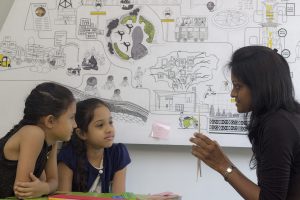
Let’s look at the factors in personalised learning that can drive an education transformation. Let’s also look at the reasons behind the school-wide personalised learning approach. Following are the main factors:
- Customised learning pace as per each student’s needs
- Tailored content, learning objectives, and tools to optimise student learning
- Learning decisions centred on learner interests, i.e., individualised learning
- Learning flexibility in terms of students get to choose what, how, when, and where they learn
- Supported by technology and influenced by the individuals’ learning data
- Helps students with a sense of control
- Fulfilling the learning objectives in small groups
- Assisting and reinforcing the learning by blended learning and online learning
Making personalised learning more than an amorphous terminology
Being on the same page:
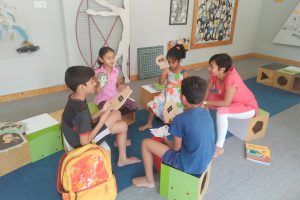
We need to share similar belief systems for clear communication about personalised learning. We can develop a framework for the entire school/education ecosystem to help students succeed. This is because the future of PL may depend on how much-extended support teachers offer.
Learning their full potential:
PL plays an active role in student’s learning with a range of techniques and flexibility of being allowed to complete their assignments at their own pace. The outcomes have already impressed many teachers and schools.
“Personalized learning is tailoring learning for each student’s strengths, needs, and interests — including enabling student’s voice and choice in what, how, when and where they learn — to provide flexibility and supports to ensure mastery of the highest standards possible”, says iNACOL, a nonprofit that supports personalized and competency-based education.
Success measures:
Becoming more competitive takes an improved assessment system. This is powered by an individual’s learning data and accountability system that assures constructivism and resource-based learning. Several factors may be obstacles to success or in tracking progress. For instance, the socioeconomic background is one such factor. Here is where a learning intervention can maximise non-cognitive skills and learner engagement.
Adoption rate:
R&D in personalised learning is a costly affair. Private schools and franchise centres can be avenues to implement personalised learning. However, there is a need to simplify the replicability to an extent that even public schools and government schools can afford it. We can look at CSR (Corporate Social Responsibility) based assistance and funding for better adoption.
The personalised learning process doesn’t have to start in high school. It can start right from primary school.
Personalised Learning Environment (PLE) in NumberNagar
We at NumberNagar, look at the better ways for overall development of students. We do this to ensure a learner-centred and student-first approach.
One of the main USPs of NumberNagar Learning Space is to provide personalized learning to the children. This learning is facilitated by experienced facilitators.
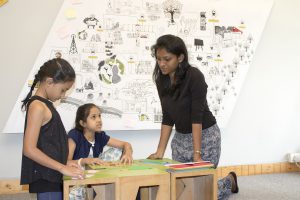
At the same time, R&D on Personalised Learning Environment (PLE) is in works for quite some time in our team. “Learning Paths” is in the centre of PLE at NumberNagar. NumberNagar’s proprietary algorithms drive PLE. It uses the power of Machine Learning to create personalised Learning Paths.
Learning paths are the multi-level path a student takes to reach a goal. Students can take a different learning path to reach the same goal.
- A learning path can be created dynamically based on the various things – the topics a student/parent/teacher choose to deal with, the current level of the student, etc.
- Each node in the learning paths is independent. Each node has various properties to denote what it is for and where it fits.
- There may be an insertion of new nodes/milestones in the learning paths based on the assessment results at a previous node/milestone. This is transparent to the students and strengthens their knowledge without showing a discouraging result.
Learning Paths are used to create a ‘Personalised Learning’ environment where:
- Every student is treated differently
- Weak students get extra attention and reinforcement
- Strong students get extra content to keep them curious and engaged
- Machine Learning based algorithms automatically decide the Learning Paths
- The facilitator/ administrator/ teacher can decide the path one has to take in advance too
Refer to the following diagram for Learning Paths:
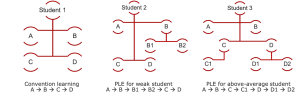
tl;dr
A Personalised Learning Environment (PLE) can use the best of technology to personalise the learning by focusing on individual learner’s pace, need, and interests.
This article is co-authored by Parimita and Nishant.
Parimita Krishna
Latest posts by Parimita Krishna (see all)
- How Personalised Learning can make your kids curious? - 14 June 2019
- What’s new in CBSE and why Experiential Learning is even more relevant? - 31 May 2019
- The Curious Case of Homeschooling in India - 5 April 2019
- Making Maths fun for your kids - 8 March 2019
- Blended Learning: A Perspective on “Learning how to Learn” - 22 February 2019

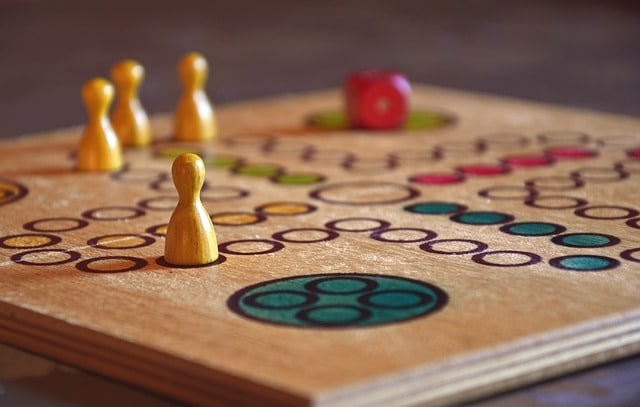
Personalised learning space is important and it gives people the feeling of inclusivity. Our current education system still runs and work onone size fits all. However, that doesn’t work in today’s ecosystem. It’s interesting to see how the current gap can be bridged using this learning.
Thanks, Ruchi for your thoughts.
We in NumberNagar use our 5C methodology, Learning Paths, and AR (Augmented Reality) for personalised learning. However, we consider technology as an enabler and not a replacement for our learning centre based approach.
Please also look at our another blog on Personalised Learning to understand what we have been thinking – https://blog.numbernagar.com/2019/06/14/how-personalised-learning-can-make-your-kids-curious/.
It’s a welcoming change we wish to see in our education system… hearty appreciations to Numbernagar to be instrumental for the change.
Thank you, Sailaja. I’m glad to see that you like our approach and conscious effort towards personalised learning.
Very interesting approach to teaching !
Thank you, Raghu!
Our approach to Personalised learning is more than just tech. It brings the best in every child.